Film Name:無敵破壞王2:大鬧互聯網 / Ralph Breaks the Internet
The animated film I most anticipated and wanted to see in 2018 was undoubtedly “Ralph Breaks the Internet.” After finally getting my wish, this sequel did not disappoint—it was the best.
On one hand, the film ingeniously revamped and continued the spirit of collecting game IPs, delivering ample “retro” charm. On the other, it dazzlingly visualized the vibrant world of the internet in a dazzling array of forms, showcasing remarkable “innovation.”
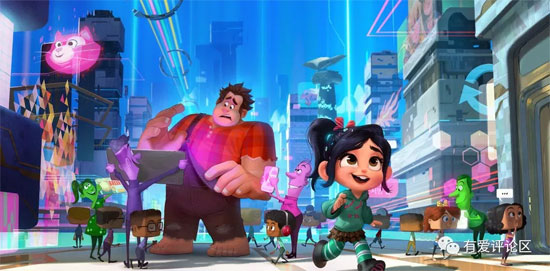
I know some viewers found the plot unoriginal (even clichéd), the storytelling somewhat shallow, and the overly entertaining trappings diluting deeper potential… But it moved me, and that’s enough.
This is a film about how friendship should be self-consistent—a gift for all who have known friendship and still hold it dear.
[Friendly reminder: The following contains minor spoilers.]
When it comes to “Ralph Breaks the Internet,” its biggest draw is undoubtedly the countless Easter eggs—you simply can’t avoid them.
Beyond the internet world’s iconic figures, some legendary and others fresh and ultra-cool, the best part is undoubtedly Disney flexing its muscles: whether you admit it or not, having that many copyrights truly lets you do whatever you want!
Disney Studios, Marvel Studios, Lucasfilm, Pixar Animation Studios—if anyone was ever in doubt about the sheer scale of Disney’s empire-building, this film offers a breathtaking glimpse that makes its power undeniably clear.
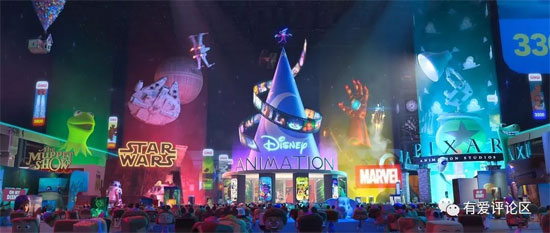
Iron Man’s low-altitude flight and Groot’s Q&A, Buzz Lightyear and Big Hero 6 interacting with fans, patrolling Stormtroopers intercepting malicious pop-ups, and even Stan Lee reimagined in anime style… This “feast” shares the spirit of Ready Player One: the more Easter eggs you spot, the more fun you have—though missing some doesn’t matter.
Clever Disney has its own agenda, reserving the most brilliant and outstanding “Easter egg” for itself—the Princess Alliance.
Here, a historical reference is unavoidable: when Vanellope interacts with the 14 princesses, Merida—speaking incomprehensible Scottish—stands out as an “outsider.” Not only is she the sole princess from Pixar, but she also shares a bit of “bad blood” with Wreck-It Ralph.
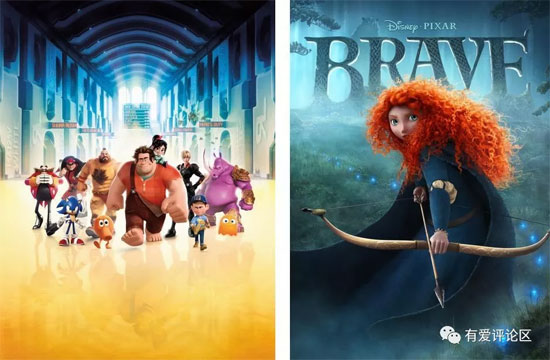
Pixar’s Brave and Disney’s Wreck-It Ralph both premiered in 2012, inevitably drawing comparisons. Yet mainstream reviews diverged sharply, with many viewers quipping, “The endlessly creative Pixar made a very ‘Disney’ film, while the traditional Disney studio crafted a distinctly ‘Pixar’ piece.”
At the time, “Wreck-It Ralph” enjoyed stronger critical acclaim and popularity than “Brave,” yet it lost to the latter in the Oscar race for Best Animated Feature. Merida’s humiliation in “Ralph Breaks the Internet” could be seen as Disney—known for its “petty” tendencies—flipping the script with a playful jab.
The “Princess Alliance” is hailed as the film’s best Easter egg precisely because they not only masterfully play with tropes but also subvert them.
Most Disney princesses “originated” in relatively traditional, conservative eras. They were often passive, vulnerable figures with complicated backstories who needed male saviors. The princesses even use this to judge Vanellope’s princess credentials—a self-deprecating touch we saw as early as the trailers.
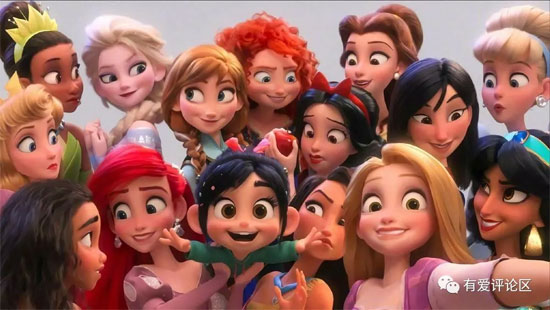
But watching the full film reveals this was merely the first step in the “princess theme”… Later, guided by the princesses, Vanellope awakens her “singing talent” and becomes Disney’s 15th princess.
The most stunning part, however, is when the princesses completely transform their usual personas, pooling their strengths to rescue Ralph—even Snow White wields a poisoned apple like a poisoned dart. What can’t they accomplish? This spirit of “princesses standing strong” is remarkably in tune with the times.
Beyond the clever use of Easter eggs, what truly stands out in “Ralph Breaks the Internet” is its masterful portrayal of the internet world.
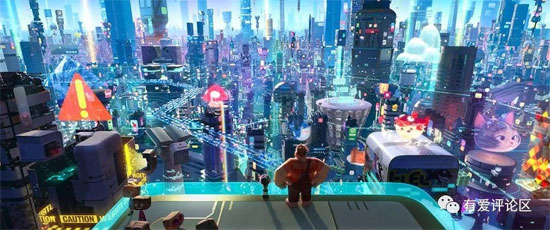
Many people don’t realize how amazing this is because it feels so natural and unremarkable—perhaps in their minds, this is simply how the internet world is supposed to be.
The internet depicted in the film is a vast futuristic metropolis, both real and surreal. It features fictional platforms like BuzzTube (a knockoff of YouTube) alongside actual companies like eBay.
In this seemingly boundless realm, a single click takes you anywhere… which brings to mind an old yet perfectly fitting term: surfing the web.
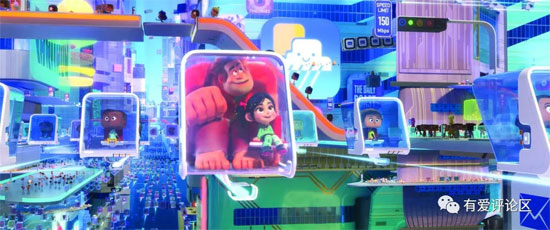
The internet world has two types of inhabitants: “cyber users”—the virtual avatars of humans online, all sporting square heads (disconnecting when they crash); the other are “cyber citizens,” the original inhabitants of the internet who maintain its operations (they could be the cool Flash or the annoying pop-up ad guy).
The film achieves “objective realism” in portraying the online world: it depicts various internet phenomena without imposing subjective judgments.
This holds true even for the “dark web.”
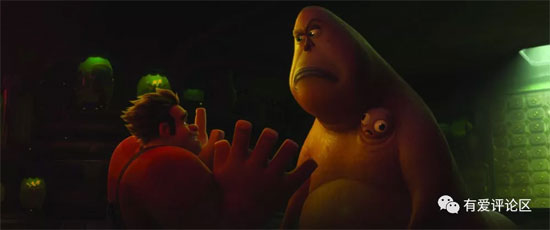
Though the underground world in the film is gloomy and fraught with danger, though the two-headed Dan doesn’t exactly look like a saint, and though the real dark web does indeed harbor many shady and illegal activities… “Ralph Breaks the Internet” still offers a relatively objective portrayal of the “dark web”: a chaotic, unfiltered wilderness of the internet where anything and everything exists.
This approach is far superior to certain media outlets that sensationalize and demonize the dark web solely for clickbait.
Within this context of striving for objective rationality, imbuing “cyber citizens” with distinct personalities becomes particularly intriguing.
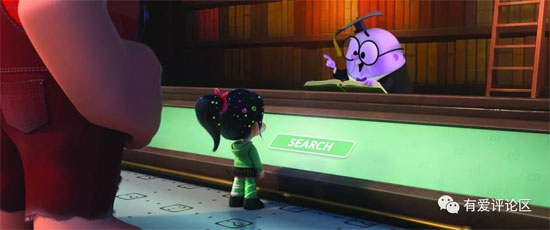
Take the all-knowing encyclopedia, who appears as a chubby-cheeked doctor, always trying to guess what others want to search for, and even getting hung up on the cold, hurried attitudes of “internet users”—in real life, search engines pulling up keywords is a super convenient feature, and we don’t exactly say “thank you” to them either— —Once you grasp this, Ralph, the chatterbox with an inflated ego, a fragile heart, and a (polite) crush on Vanellope, becomes utterly endearing.
“Ralph Breaks the Internet” maintains objectivity without being entirely devoid of “attitude”; it simply embeds that attitude within the phenomena, avoiding overt praise or criticism.
The plan “Uncle Ralph” tailors for Ralph—turning him into an internet celebrity to monetize likes—is a prime example.
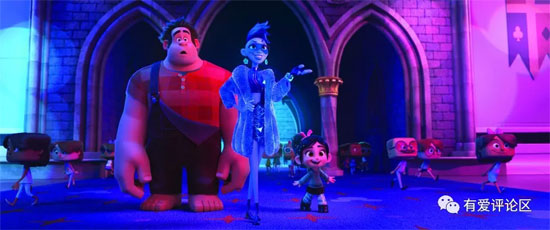
A single like is cheap, but thousands can unlock traffic dividends; behind the screen, people might laugh heartily or frown and curse; “netizens” make choices through careful selection, yet might just casually click a pop-up ad… In this world, reason coexists with blindness, substance with exaggeration.
These are the widely acknowledged strengths of “Ralph Breaks the Internet,” yet what captivates me most is its most controversial core theme: the evolution of friendship.
The first film, “Wreck-It Ralph,” chronicled Ralph and Vanellope’s journey to find “belonging,” where chance brought them together as dear friends. Audiences witnessed the birth of an irreplaceable bond.
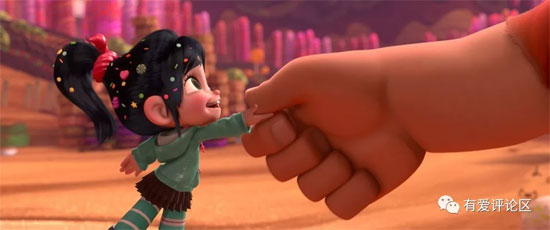
In truth, Ralph and Vanellope are fundamentally different beings: the former thrives on repetitive, unchanging routines, content with modest comforts and the simple joy of genuine friendship; the latter craves constant novelty, relentless challenges, and the thrill of the unknown, yet yearns for a fresh start.
If the first film proved that “different people can still be friends,” the second aims to show that “friends can remain friends even after discovering each other’s flaws and differing pursuits.”
By all accounts, Ralph is incredibly generous: when Vanellope complains of boredom, he builds her a new race track; when the Tatarak breaks down, he takes his friend to the internet to find a steering wheel; to raise money for the steering wheel, he films all sorts of silly videos to collect likes…
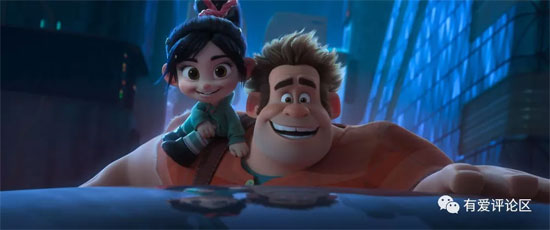
Ralph could care less about the hurt caused by cyberbullying—he’d long since grown accustomed to being the villain. As long as he could be Vanellope’s one and only hero, he’d have no regrets. How many friends like that exist in the world?
“Friends” can be perfect, but no “person” can be flawless. Ralph had his own faults too—annoying, clingy, lacking confidence… In fact, both crises in the film stemmed from him: “Tatarak” broke down because Ralph recklessly built a new track before the finish line, and the internet world faced a virus attack because Ralph himself became the biggest security breach.
To help and keep his friend, the well-meaning Wreck-It Ralph became the villainous “Wreck-It Ralph”—this was the consequence of mishandling a friendship crisis.

Of course, these “crises” weren’t entirely Ralph’s fault—Vanellope shares responsibility too: Had she not insisted on racing the new track with the player, “Tatarak” wouldn’t have been ruined. If she’d told her friend she’d changed her mind in time, Ralph might not have been driven to use the virus.
Truth be told, everyone has selfish, stubborn sides. Most people can never become or have “perfect friends,” because we each carry our own issues and flaws, alongside our own dreams and pursuits.
But who says imperfect people, or those with different paths, can’t be friends? By the end of “Ralph Breaks the Internet,” Ralph and Vanellope have reached a reconciliation. One idles in a deserted arcade, the other drifts through the thrilling chaos of “Crash Bandicoot”—their friendship, far from being torn apart by distance, grows stronger and more resilient through their mutual maturity.
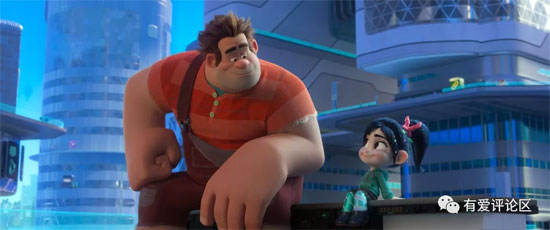
I find this film deeply healing: some people who might never have crossed paths otherwise become friends because they lived near each other as kids, shared desks, or played games together. Now grown up, some chase dreams in Beijing, Shanghai, Guangzhou, or Shenzhen, while others stay in their hometowns… Yet even when paths diverge, beyond the growing distance, there might still be that lingering bond.
For me to feel this resonance, “Ralph Breaks the Internet” is the perfect example.
Please specify:Anime Phone Cases » Ralph Breaks the Interne 無敵破壞王2:大鬧互聯網 2018 Film Review: Better to watch over each other in the world than to rely on each other in times of need.